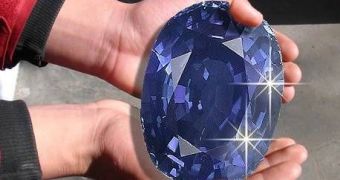Almost as hard as diamond, no carbon inside!
The name diamond derives from the ancient Greek "adamas", meaning invincible, and have been treasured as gemstones since their use as religious icons in ancient India and in engraving tools in early human history.
They are especially renowned due to their superlative physical qualities, being excellent abrasives than can be scratched only by other diamonds, and the hardest known natural material.
Recently, scientists have created the first non-carbon-based material with a hardness approaching that of diamond. Their work could have a significant impact on technologies and industries that rely on diamond as a cutting and drilling tool and abrasive.
Instead of consisting of one large continuous crystal, it is made of crystalline boron-nitride grains that are each a few to several nanometers in size. Although research groups have previously reported boron carbonitride materials, claimed to be the second and third hardest materials after diamond, the particular versions, or "phases" of those materials were unstable at high temperatures. In industry, this is a major drawback.
The boron nitride nanocomposite is considered an important discovery, since: "The real breakthrough would be a bulk material that is hard, tough, and thermally stable, and thus ideal for cutting and drilling, and we are the first to synthesize a bulk noncarbon material that fits this description," according to Natalia Dubrovinskaia, a researcher with the University of Heidelberg and the University of Bayreuth.
For this nanocomposite, as for many polycrystalline materials - composed of crystalline grains-, there is a grain size for which the material's hardness is optimized, usually in the nanometer range, and it displays a maximum hardness of 85 GPa at a grain size of about 14 nanometers, and is thermally stable up to 1600 degrees Kelvin (about 2400 degrees Fahrenheit).
The increased hardness is the result of two factors: the nanoscale-grain-size effect and each grain's two-phase composition. That is, each grain has a nanoscale crystalline structure and a sub-nanoscale structure. This complex composition significantly increases the bulk material's mechanical strength.
Industrial applications may soon follow, as this new material could replace diamonds, currently embedded in drill tips or saw blades, or ground into a powder for use in grinding and polishing, high-performance bearings, some specialized windows, or in laboratories, as containment for high pressure experiments.
A more familiar use would be as a semiconductor suitable for building microchips.

 14 DAY TRIAL //
14 DAY TRIAL //